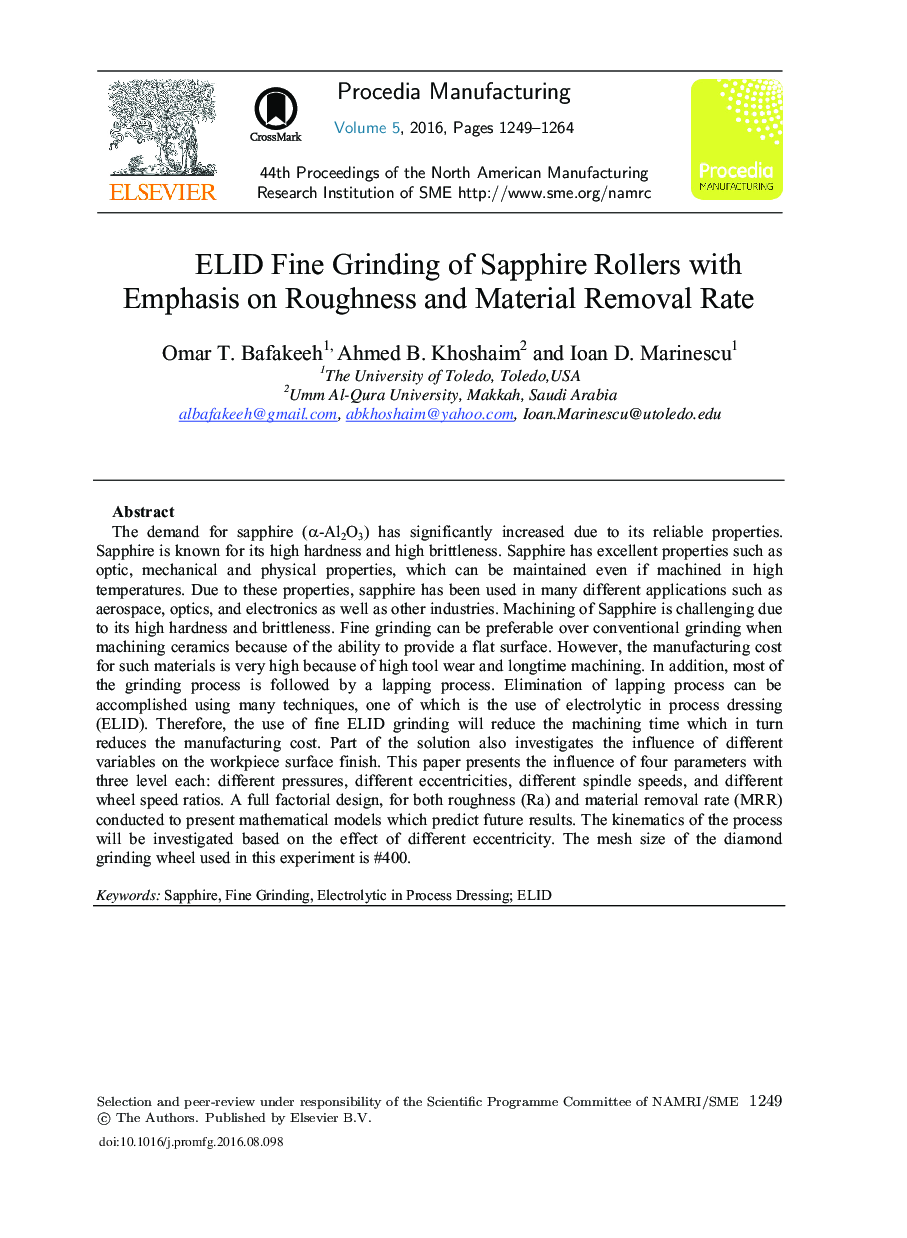| کد مقاله | کد نشریه | سال انتشار | مقاله انگلیسی | نسخه تمام متن |
|---|---|---|---|---|
| 5129097 | 1489607 | 2016 | 16 صفحه PDF | دانلود رایگان |

The demand for sapphire (α-Al2O3) has significantly increased due to its reliable properties. Sapphire is known for its high hardness and high brittleness. Sapphire has excellent properties such as optic, mechanical and physical properties, which can be maintained even if machined in high temperatures. Due to these properties, sapphire has been used in many different applications such as aerospace, optics, and electronics as well as other industries. Machining of Sapphire is challenging due to its high hardness and brittleness. Fine grinding can be preferable over conventional grinding when machining ceramics because of the ability to provide a flat surface. However, the manufacturing cost for such materials is very high because of high tool wear and longtime machining. In addition, most of the grinding process is followed by a lapping process. Elimination of lapping process can be accomplished using many techniques, one of which is the use of electrolytic in process dressing (ELID). Therefore, the use of fine ELID grinding will reduce the machining time which in turn reduces the manufacturing cost. Part of the solution also investigates the influence of different variables on the workpiece surface finish. This paper presents the influence of four parameters with three level each: different pressures, different eccentricities, different spindle speeds, and different wheel speed ratios. A full factorial design, for both roughness (Ra) and material removal rate (MRR) conducted to present mathematical models which predict future results. The kinematics of the process will be investigated based on the effect of different eccentricity. The mesh size of the diamond grinding wheel used in this experiment is #400.
Journal: Procedia Manufacturing - Volume 5, 2016, Pages 1249-1264